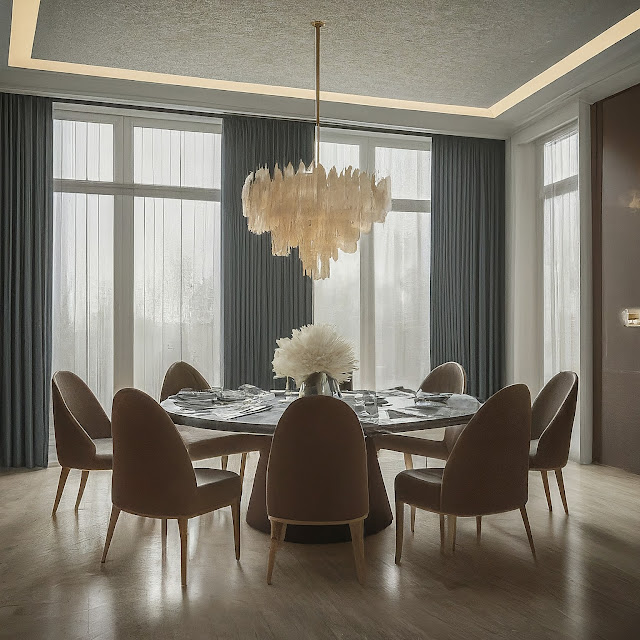The Most Innovative Building Materials of the 21st Century
The 21st century has seen an explosion of innovation in building materials—driven by the need for sustainability, efficiency, resilience, and smart technology integration. Architects, engineers, and material scientists are now creating structures that are not only stronger and more efficient but also environmentally friendly and aesthetically revolutionary.
Here’s a look at the most groundbreaking building materials that are redefining construction in the modern era.
1. Self-Healing Concrete
Why It’s Innovative:
Concrete is the most widely used building material on Earth, but it's prone to cracking. Self-healing concrete contains bacteria (like Bacillus) or special capsules that release healing agents when cracks appear, automatically sealing them.
Benefits:
-
Extends the lifespan of structures
-
Reduces maintenance and repair costs
-
Improves safety and durability
2. Cross-Laminated Timber (CLT)
Why It’s Innovative:
CLT is a wood panel made from gluing layers of solid-sawn lumber at right angles. It combines strength, sustainability, and versatility, making it a viable alternative to steel and concrete in mid- to high-rise buildings.
Benefits:
-
Renewable and sustainable
-
Light yet strong
-
Quick assembly and reduced construction time
3. Transparent Solar Panels
Why It’s Innovative:
These advanced panels can be used as windows while generating electricity. They use organic photovoltaic materials or specially engineered glass to absorb sunlight without blocking visible light.
Benefits:
-
Dual-purpose: aesthetics + energy generation
-
Ideal for skyscrapers and glass-heavy structures
-
Supports net-zero energy goals
4. Graphene-Infused Materials
Why It’s Innovative:
Graphene is a one-atom-thick layer of carbon with exceptional strength, conductivity, and flexibility. When infused into cement, coatings, or insulation, it enhances structural performance and durability.
Benefits:
-
Increases material strength
-
Improves thermal and electrical conductivity
-
Lightweight and ultra-thin
5. Aerogel Insulation
Why It’s Innovative:
Aerogels are ultra-light materials made by removing the liquid from a gel. They offer some of the highest insulation properties with minimal thickness.
Benefits:
-
Exceptional thermal performance
-
Space-saving insulation
-
Fire- and moisture-resistant
6. Recycled Plastic Bricks and Blocks
Why It’s Innovative:
Plastic waste is transformed into durable construction blocks and bricks. These materials are strong, lightweight, and eco-friendly.
Benefits:
-
Reduces landfill waste
-
Energy-efficient to produce
-
Water- and pest-resistant
7. Mycelium (Fungal) Bricks
Why It’s Innovative:
Mycelium, the root structure of fungi, can be grown into molds to create biodegradable building bricks. They are lightweight and compostable, yet strong enough for use in temporary structures.
Benefits:
-
Fully biodegradable
-
Low-carbon production
-
Natural insulation properties
8. 3D-Printed Concrete
Why It’s Innovative:
3D printing is revolutionizing construction by enabling fast, precise, and customizable building of structures with concrete-like materials.
Benefits:
-
Reduces construction time and labor
-
Allows for complex and creative designs
-
Minimizes material waste
9. Phase-Changing Materials (PCMs)
Why It’s Innovative:
PCMs absorb and release thermal energy as they change from solid to liquid and vice versa. Integrated into walls or ceilings, they help regulate indoor temperatures.
Benefits:
-
Reduces heating and cooling costs
-
Improves indoor comfort
-
Supports energy efficiency
10. Smart Glass
Why It’s Innovative:
Also known as switchable glass, smart glass can change its light transmission properties in response to voltage, heat, or light. It's commonly used in windows, skylights, and facades.
Benefits:
-
Reduces glare and heat gain
-
Enhances privacy on demand
-
Energy-efficient and aesthetically sleek
Final Thoughts
The future of construction is being shaped by a powerful mix of sustainability, technology, and creativity. From fungi-based bricks to windows that generate power, the 21st century’s building materials reflect a growing consciousness about our planet and a desire to build smarter, longer-lasting, and more beautiful spaces.
As the industry continues to evolve, these materials may become standard—paving the way for cities that are greener, stronger, and more adaptable than ever before.






_1.jpg)
_2.jpg)
_1.jpg)
_2.jpg)
_1.jpg)
_1.jpg)
_2.jpg)
_1.jpg)
_2.jpg)
_1.jpg)
_2.jpg)
_1.jpg)
_2.jpg)












.jpg)












